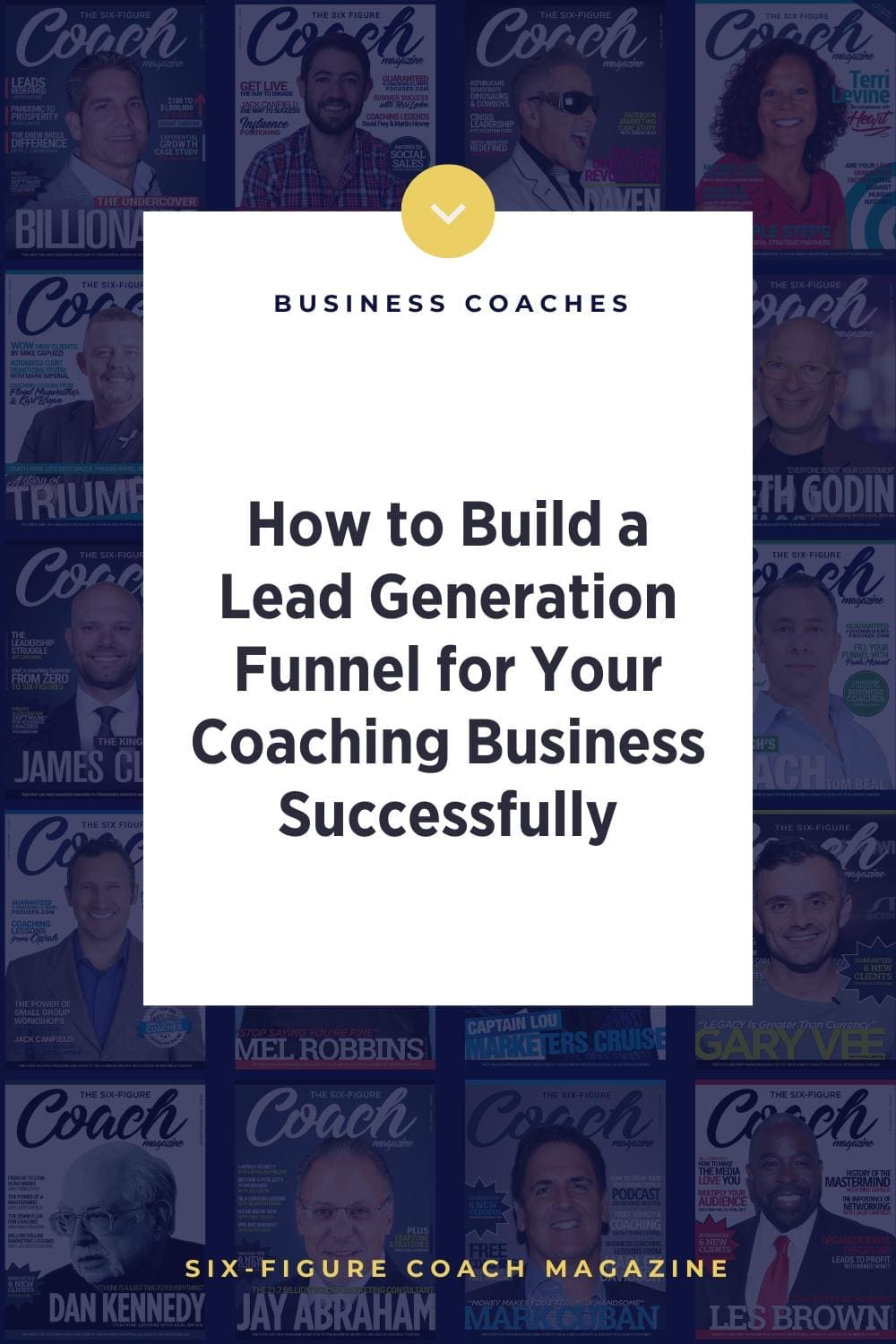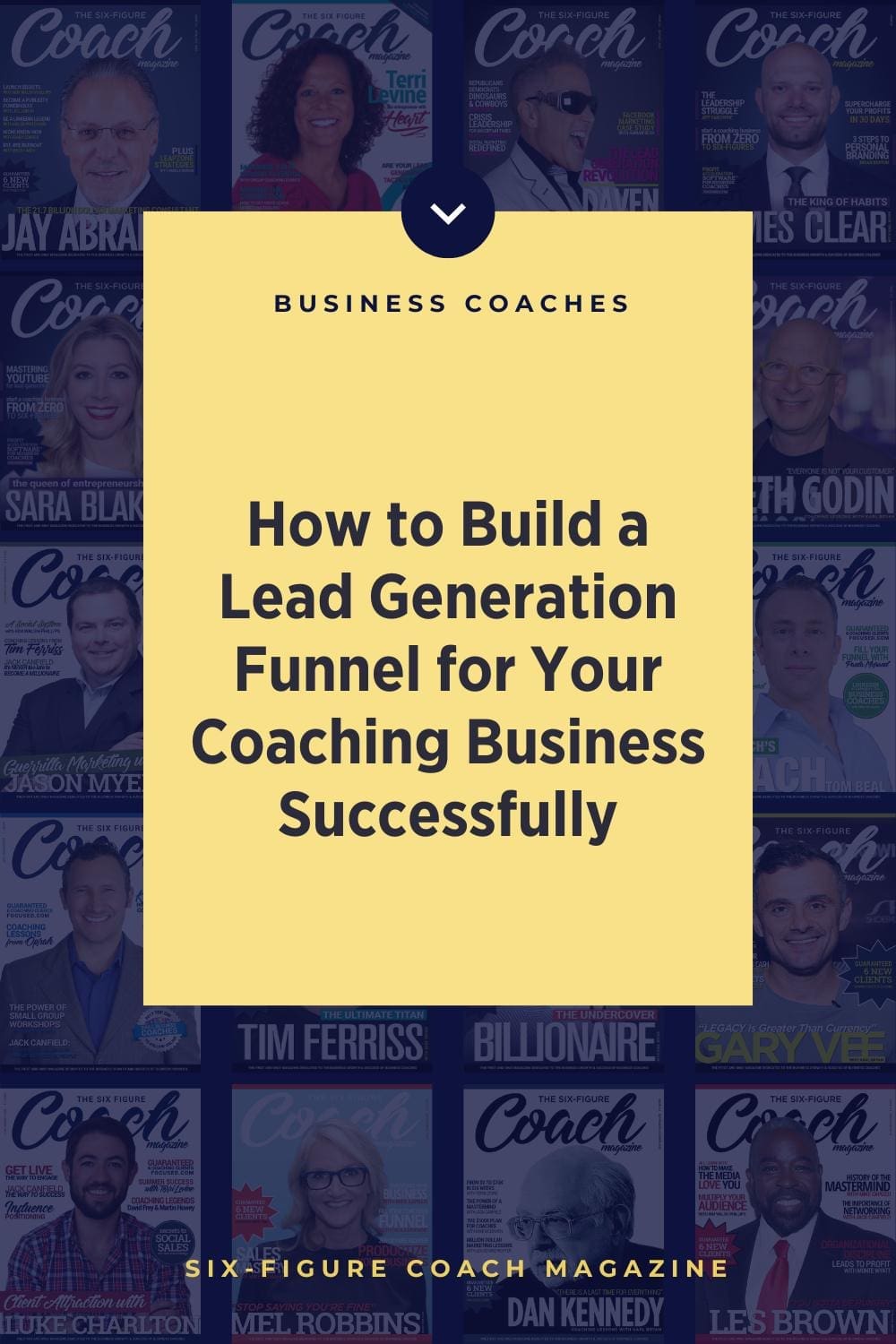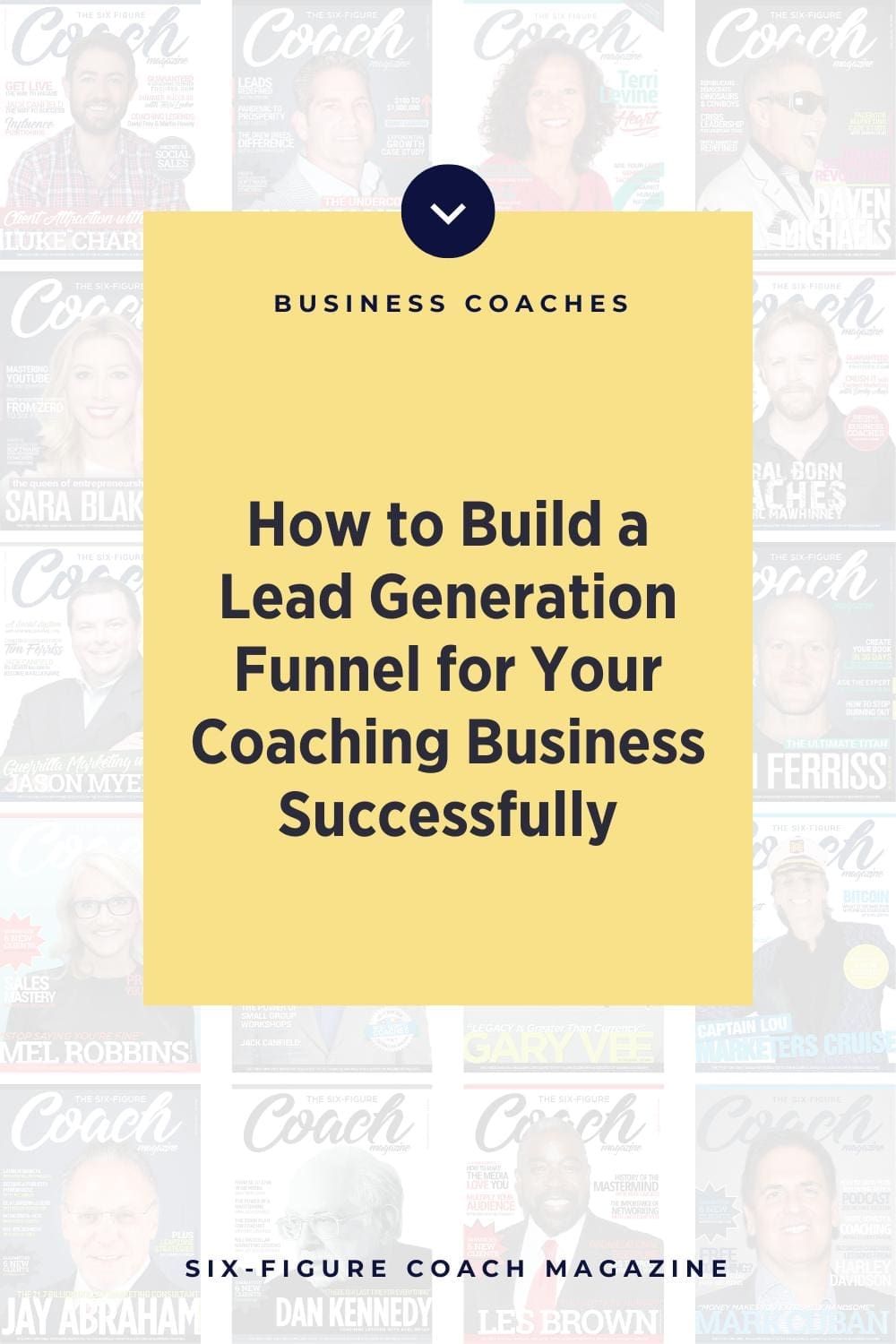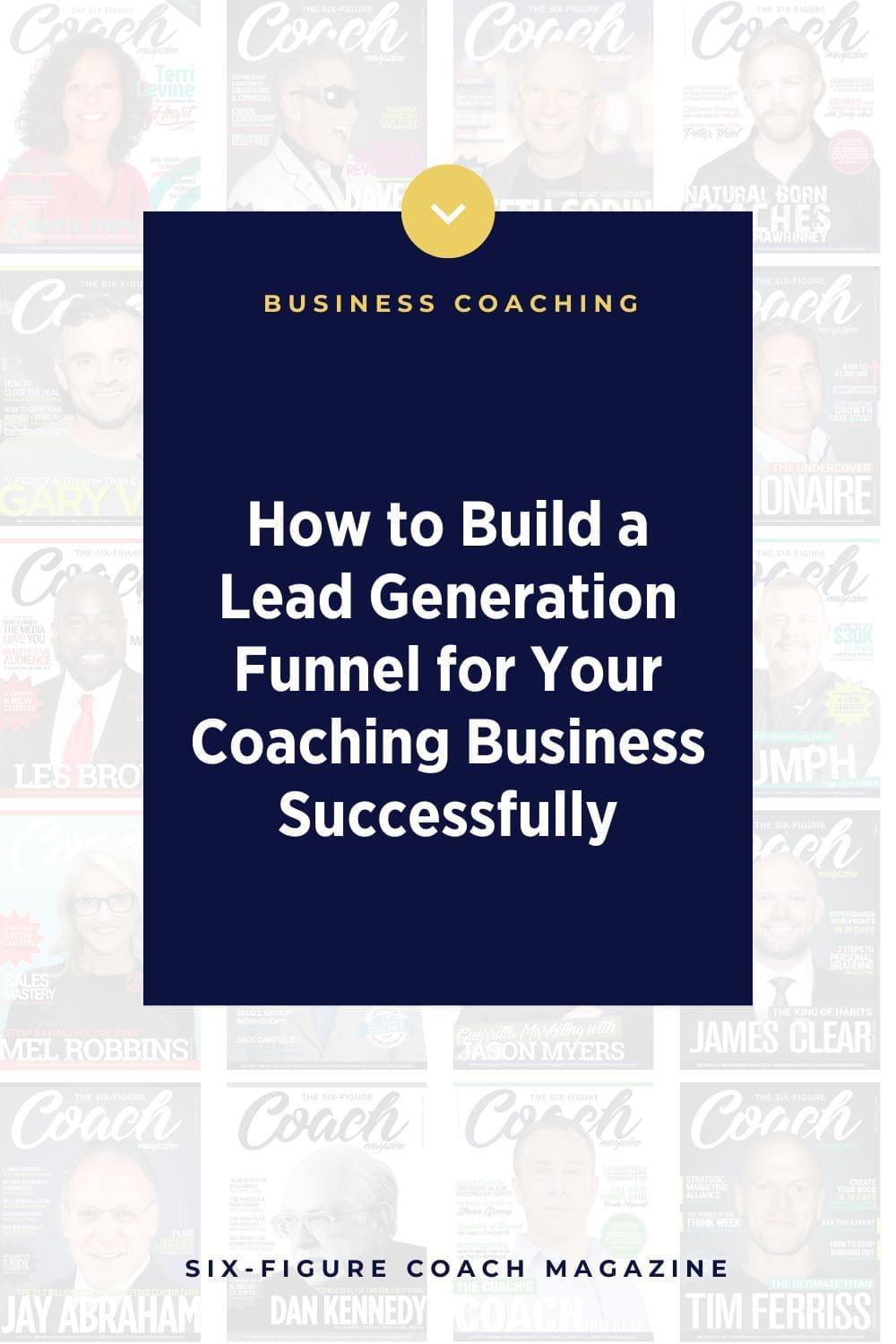How to Build a Lead Generation Funnel for Your Coaching Business Successfully
Building a lead generation funnel is crucial for any coaching business looking to grow. A well-structured funnel helps attract the right clients and makes it easier to convert them into paying customers. By focusing on understanding the target audience and creating valuable content, a coach can guide potential clients through each step of the buying process.
Creating a funnel involves several key components, starting from awareness to nurturing leads and finally making a sale. Each stage should address the specific needs and concerns of potential clients. This strategy not only saves time but also ensures a steady stream of clients for the coaching business.
Understanding how to create and optimize each part of the funnel can lead to increased engagement and higher conversion rates. With the right approach, a coaching business can see significant growth and establish a strong presence in the market.
Understanding Lead Generation
Lead generation is crucial for coaching businesses. It involves attracting potential clients and guiding them through the sales process. This section covers the concept of lead generation and why leads are vital for coaches.
The Concept of Lead Generation
Lead generation means finding people who might be interested in coaching services. This can happen through various methods like social media, webinars, or content marketing. The goal is to capture their information, such as their name and email.
Once a lead shows interest, coaches can build a relationship. This often includes sending helpful content that addresses their problems. By providing value, coaches can encourage leads to consider their services seriously.
Effective lead generation uses tools like landing pages and sign-up forms. These help convert visitors into leads. Coaches should focus on creating clear messages that speak directly to their target audience’s needs.
Importance of Leads for Coaching Businesses
Leads are the lifeblood of any coaching business. Without leads, there are no potential clients to work with. Generating leads helps coaches grow their client base and increase their revenue.
Having a steady stream of leads also helps in planning. Coaches can predict their earnings and set goals based on the number of leads they have. This makes it easier to develop marketing strategies and outreach plans.
Furthermore, leads can provide valuable insights. By analyzing which leads convert into clients, coaches can refine their approach. Understanding what works best enhances their ability to attract more clients in the future.
The Structure of a Lead Generation Funnel
A lead generation funnel helps guide potential clients through their journey from awareness to conversion. Each part of the funnel plays a key role in turning leads into customers by addressing their needs and concerns.
Top of the Funnel: Awareness
At the top of the funnel, the goal is to attract attention. People in this stage do not yet know about the coaching services available. Effective methods include:
- Social Media Marketing: Posts and ads on platforms like Instagram, Facebook, and LinkedIn can reach a wider audience.
- Content Marketing: Blogs, videos, and podcasts offer valuable information. This builds trust and positions the coach as an expert.
- SEO: Optimizing content for search engines helps potential clients find the coach’s services more easily.
Engaging content and targeted outreach are crucial in this phase. The aim is to capture leads’ interest and make them aware of coaching benefits.
Middle of the Funnel: Consideration
In the middle of the funnel, potential clients evaluate their options. They think about whether the coaching services offered meet their needs. Key strategies include:
- Email Marketing: Sending informative newsletters keeps leads engaged. They can provide additional insights into services.
- Webinars and Free Workshops: These interactive sessions showcase expertise. They allow for personal interaction and provide value without commitment.
- Testimonials and Case Studies: Social proof can influence decisions. Real-life successes help leads see the value of coaching.
This stage is about nurturing leads and helping them see the benefits of choosing the coach. Clear communication is vital.
Bottom of the Funnel: Conversion
At the bottom of the funnel, the focus is on converting leads into paying clients. This is where final decisions are made. Important tactics include:
- Clear Calls to Action: Strong prompts guide leads on what to do next, such as booking a consultation.
- Limited-Time Offers: Promotions can create urgency and encourage quick decisions.
- Personalized Follow-Ups: Tailored messages addressing specific needs can make a big difference in closing sales.
This stage requires a careful approach to address any last-minute concerns. The goal is to turn interested leads into committed clients.
Creating a Content Marketing Strategy
A strong content marketing strategy is essential for attracting clients to a coaching business. It focuses on delivering valuable content while targeting the right audience. This can lead to increased engagement and trust.
Identifying Your Target Audience
Identifying the target audience is crucial. This involves understanding their needs, interests, and challenges. Coaches should create a detailed profile for their ideal clients.
Questions to consider:
- What age group do they belong to?
- What are their professional backgrounds?
- What problems do they want solved?
Using surveys and social media can provide insights. Coaches can also analyze competitor audiences to gather useful information.
Knowing the audience helps in tailoring content that resonates. This increases the chance of generating leads and nurturing relationships.
Developing Your Content Plan
After identifying the audience, it’s time to develop a content plan. This includes planning what type of content to create. It can be blog posts, videos, podcasts, or social media posts.
Steps to create a content plan:
- Set clear goals: Decide what the content should achieve.
- Choose formats: Select formats that best suit the audience.
- Create a content calendar: Organize publishing dates to stay consistent.
Coaches should focus on providing solutions and valuable insights. It’s also important to track engagement metrics. This helps in adjusting the strategy as needed to improve results.
Leveraging Social Media for Lead Generation
Social media is a powerful tool for generating leads in a coaching business. By using the right platforms and creating engaging content, coaches can attract potential clients and build relationships.
Choosing the Right Platforms
Selecting the right social media platforms is crucial. Coaches should consider where their target audience spends most of their time.
Here are some popular platforms:
- Facebook: Great for community building and sharing detailed posts.
- Instagram: Ideal for visually appealing content and younger audiences.
- LinkedIn: Best for professional networking and connecting with businesses.
Coaches should focus on 1-2 platforms that align with their audience. This focused approach helps build a stronger presence and engage followers effectively.
Crafting Engaging Social Content
Creating engaging content is key to attracting leads. Coaches should share valuable insights, tips, and stories that resonate with their audience.
Tips for crafting engaging content include:
- Use visuals: Images and videos capture attention quickly.
- Be relatable: Share personal stories and experiences to connect with followers.
- Encourage interaction: Ask questions or create polls to engage the audience.
Consistency is also important. Regular posting keeps the audience interested and helps build trust over time.
Optimizing Your Website for Conversions
A well-optimized website can turn visitors into leads. Focus on design principles and effective call-to-action elements for the best results.
Website Design Principles
A clean and user-friendly design is crucial. Visitors should easily navigate the site. Use simple layouts and easy-to-read fonts. Stick to a cohesive color scheme that matches the brand.
Loading speed is important too. A slow site can frustrate users and make them leave. Optimize images and use efficient coding practices.
Mobile responsiveness matters. Many users access websites on their phones. Ensure the website looks good and works well on all devices.
Incorporating white space helps to focus attention on key areas. Avoid clutter to create a clear path for visitors.
Call-to-Action Elements
Strong call-to-action (CTA) buttons guide users to take the next step. Use clear, action-oriented text like, Start Your Free Trial or Get Your Free Ebook
CTAs should be visually striking. Use contrasting colors and larger sizes to make them stand out. Place them strategically throughout the site, especially at the top and bottom of pages.
Position CTAs near relevant content. This increases the chances that visitors will engage with them.
Testing CTAs is essential. Try different wording, colors, or placements to find what works best. Utilize tools for A/B testing to analyze results and improve effectiveness.
Implementing Email Marketing Campaigns
Email marketing is a powerful tool for connecting with potential clients. It allows businesses to nurture leads and build relationships over time. Two important steps in this process are building an email list and crafting effective email sequences.
Building Your Email List
Creating a strong email list is the first step in any email marketing campaign. This list should consist of people who are genuinely interested in coaching services. Here are key points to consider:
- Offer Incentives: Create lead magnets like eBooks, free webinars, or checklists. These can encourage visitors to share their email addresses.
- Utilize Signup Forms: Place these forms on your website, social media pages, and during events. Make them easy to access.
- Promote on Social Media: Share links to your signup forms regularly. Use clear and inviting language to attract attention.
- Engage Existing Contacts: Ask current clients to join your email list for updates and exclusive offers.
These practices help grow a targeted email list that can yield better engagement rates.
Crafting Effective Email Sequences
Once the email list is built, crafting effective email sequences is crucial. This involves sending a series of programmed emails that guide leads through the sales funnel. Focus on these elements:
- Welcome Email: Start with a warm welcome that outlines what they can expect. This sets a positive tone.
- Nurturing Content: Send valuable content over time. This could include tips, success stories, or useful resources relevant to coaching.
- Call to Action: Include a clear call to action in each email. This encourages recipients to take the next step, whether that means scheduling a consultation or downloading more resources.
- Timing and Frequency: Maintain a consistent schedule for sending emails. Finding the right balance, without overwhelming subscribers, is key.
These steps help maintain engagement and increase the likelihood of converting leads into clients.
Using Paid Advertising Effectively
Paid advertising can greatly enhance lead generation for a coaching business. It allows for quick visibility and targeted outreach to potential clients. Understanding how to utilize different ad platforms and create focused campaigns is crucial.
Understanding Different Ad Platforms
There are several ad platforms that can help reach the right audience. The most popular ones include:
- Google Ads: Great for capturing search intent. Users searching for specific coaching services can see targeted ads.
- Facebook Ads: Uses demographics and interests to target specific user groups. This platform is visual and allows for engaging content.
- LinkedIn Ads: Ideal for professional coaching. It targets business-minded individuals and groups.
Choosing the right platform depends on the coaching niche and the audience’s online behavior. It’s important to experiment with different platforms to find the most effective ones for lead generation.
Creating Targeted Ad Campaigns
Creating targeted campaigns involves setting clear goals and identifying the audience. Start by defining who the ideal client is.
Next, use the following steps:
- Set Goals: Decide if the campaign aims to increase sign-ups, downloads, or inquiries.
- Audience Research: Use tools to understand interests and demographics. Tailor ads to meet specific needs.
- Design Compelling Ads: Use eye-catching images or videos. Clear and concise messaging is key.
Regularly review campaign performance. Adjust targeting and creative elements based on results. This ongoing optimization can improve conversion rates and increase leads.
Measuring and Analyzing Funnel Performance
To ensure a lead generation funnel is effective, measuring and analyzing its performance is crucial. Coaches need to know what works and what doesn’t. This involves tracking specific metrics and using the right tools for insights.
Key Performance Indicators (KPIs)
KPIs help coaches assess how well their funnel performs. Important KPIs to track include:
- Conversion Rate: This shows the percentage of visitors who take the desired action, like signing up for a newsletter or booking a call.
- Lead Quality: Understanding where leads come from helps in evaluating their potential value. High-quality leads are more likely to convert into clients.
- Cost Per Lead (CPL): This measures how much it costs to acquire each lead. A lower CPL means a more efficient funnel.
- Closed Deals: This tracks the number of leads that turn into paying clients. It’s a direct indicator of funnel success.
By focusing on these KPIs, coaches gain insights to improve their process and increase sales.
Tools for Tracking and Analysis
Using the right tools makes it easier to measure funnel performance. Here are some recommended options:
- Google Analytics: This free tool tracks website traffic and user behavior. Coaches can see where their leads come from and what pages they visit.
- CRM Software: Tools like HubSpot or Salesforce manage leads and analyze customer interactions. They provide valuable data on conversion rates.
- Social Media Insights: Platforms like Facebook and Instagram offer analytics. Coaches can track engagement and lead generation from their social media efforts.
- Email Marketing Software: Services like Mailchimp help monitor open rates and click-through rates. This shows how effective email campaigns are in generating leads.
By leveraging these tools, coaches can gather essential data and make informed decisions to enhance their lead generation processes.
Refining Your Strategy Over Time
To grow a coaching business, it is important to continually adjust the lead generation strategy. Two key methods for this are A/B testing and adapting to market changes. These approaches help ensure the business remains effective and relevant.
A/B Testing for Optimization
A/B testing is a powerful tool for improving marketing efforts. It involves comparing two versions of a web page, ad, or email to see which one performs better.
Steps for A/B Testing:
- Identify Elements: Choose which part to test, such as headlines, images, or calls-to-action.
- Create Variants: Develop two different options to compare.
- Run Tests: Show each version to a segment of the audience at the same time.
- Analyze Results: Look at metrics such as click-through rates and conversions to determine the winner.
Through A/B testing, businesses can gradually refine their approach and enhance their lead generation funnels based on real data.
Adapting to Market Changes
Markets are always changing. Staying aware of industry trends and customer needs is crucial. When a coaching business notices shifts, it must respond quickly.
Ways to Adapt:
- Monitor Trends: Use tools like Google Trends or social media to see what topics are trending.
- Gather Feedback: Regularly ask clients for their opinions on services and strategies.
- Update Content: Refresh coaching materials or marketing messages to align with current interests.
By adjusting strategies based on market conditions, a coaching business can improve its connections with potential clients and maintain relevance.
You may also like
Many Paths to Success: The Tools and Systems That Power Top Business Coaches
Explore the many tools, programs, and paths business coaches use to succeed — and see why Focused.com’s Profit Acceleration Software™ is the ultimate system for growth and client results.
The Three Unbreakable Pillars of Business Coaching Success
Discover the three unstoppable strategies every business coach needs—lead generation, conversion, and fulfillment—to build a powerhouse coaching practice. Book a call to learn more.
The Power of Cloning: Why Reinventing the Wheel is Killing Your Coaching Business
Discover why cloning proven business models and strategies is the ultimate shortcut to growing your coaching business, and how you can take action today.












